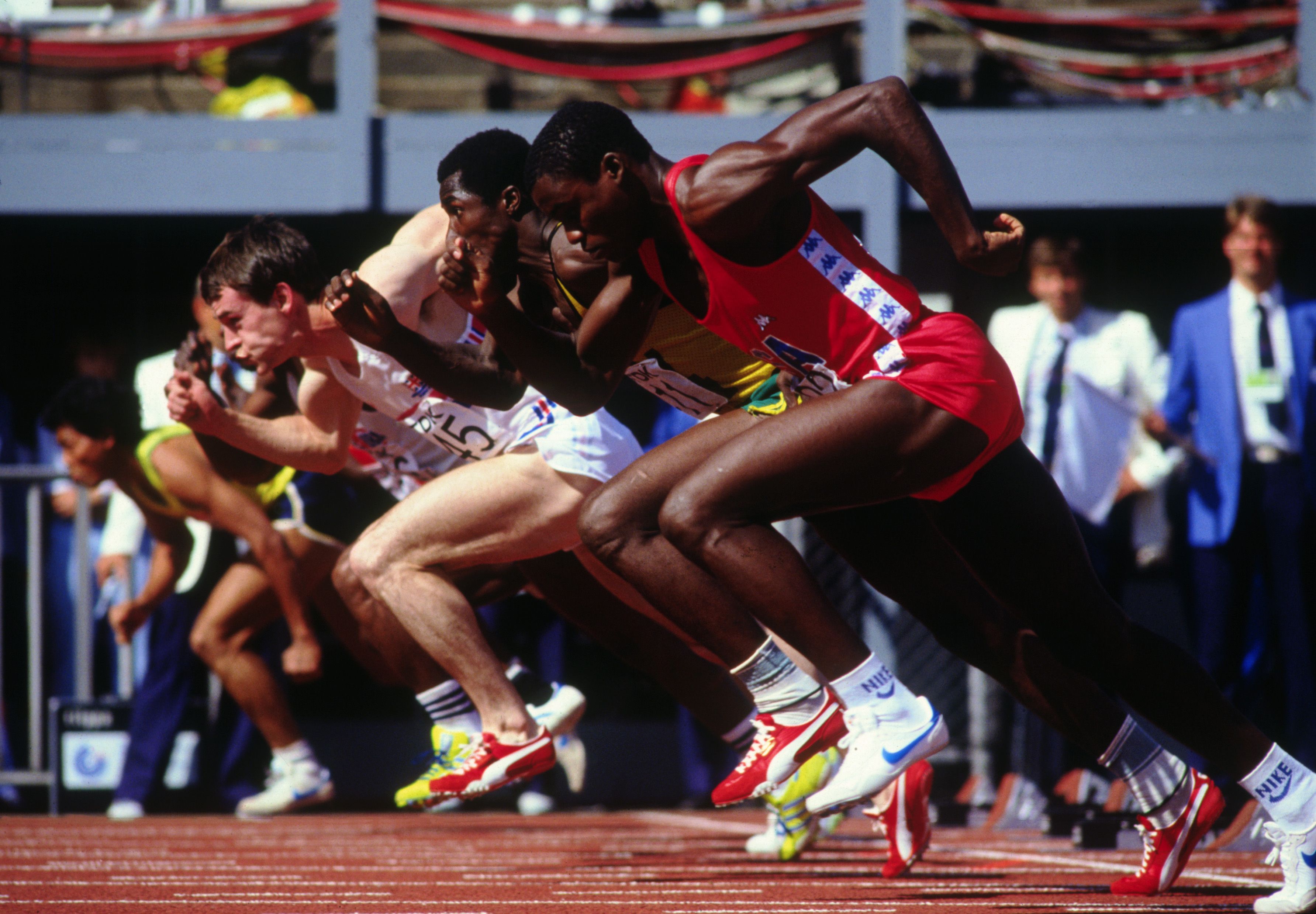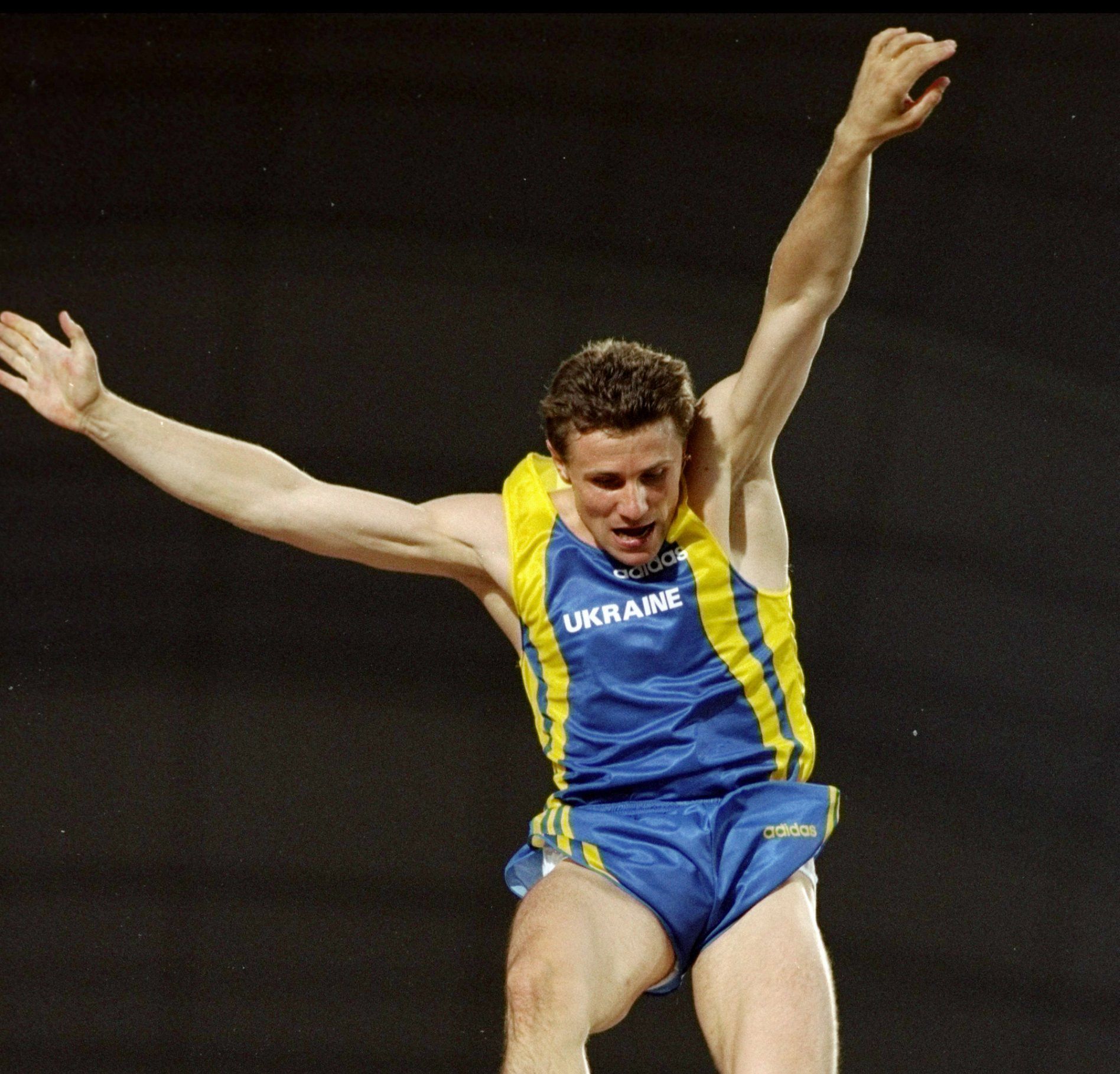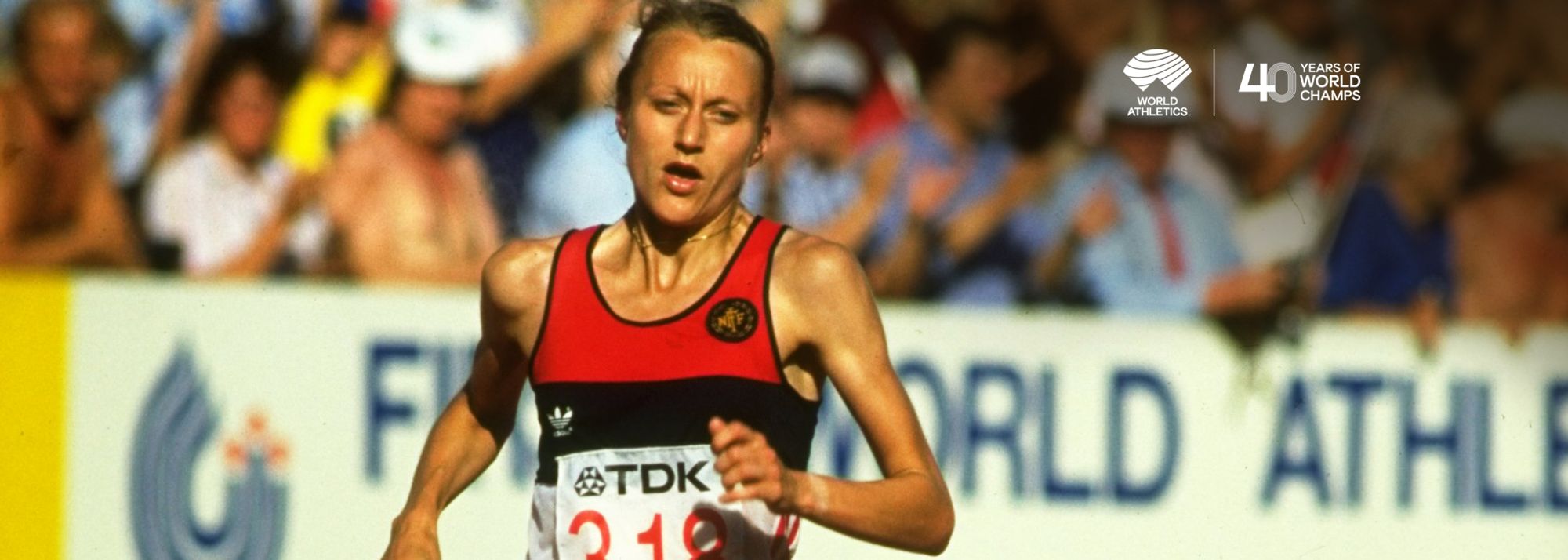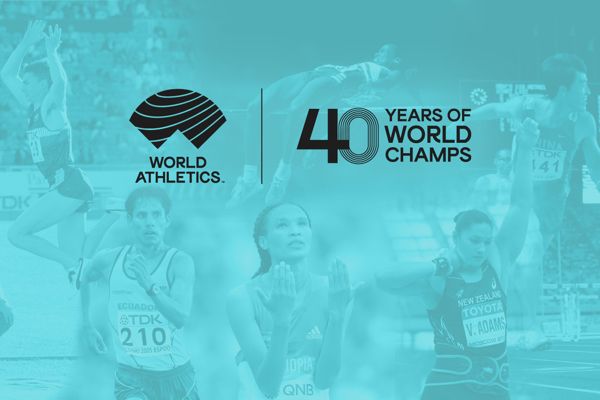Grete Waitz on her way to marathon victory at the inaugural World Championships in Helsinki (© Allsport / Getty Images)
Sport does not sit outside of society. And as a truly global sport, athletics, more than most, is influenced by what is happening in the wider world.
Over the 40 years since the World Athletics Championships was established in 1983, the world has changed remarkably, and athletics has changed with it. Occasionally, the World Championships has perfectly captured the spirit of the times in which they have been held.
From geopolitical shifts to cultural evolution, or revolution, these are some of the Zeitgeist moments of the World Championships.
1983 Helsinki – Waitz becomes a pioneer champion
I am woman, hear me roar.
The race for women’s rights quickened in the 1970s around the world, and the introduction of the marathon to the women’s programme at the first World Athletics Championships reflected the opening of doors to women in other walks of life.
Historically, some medical experts claimed that running the marathon distance, 26 miles 385 yards (42.195km), was dangerous for women's health. But through the 1970s, female athletes like Grete Waitz had pushed the boundaries of the accepted wisdom around their endurance capacities.
Such feats led to calls for the women’s marathon to be included in the Olympic programme, but significant opposition remained.
However, the sport’s global governing body bit the bullet and announced it would be added to the programme for the inaugural World Championships in Helsinki. It would not only be the World Championships debut for the event, but the first time there had ever been a global championship for female marathon runners, beating the event’s Olympic debut by one year.
When Waitz lined up at the start in Helsinki, she was understandably the favourite.
She was already a four-time winner of the New York City Marathon and had added the London title on 17 April 1983 in a world record of 2:25:29, although Joan Benoit lowered the mark to 2:22:43 in Boston the following day. But Benoit had not qualified for the US team in the marathon, leaving Waitz as the fastest in the field in Helsinki.
The Norwegian lived up to that billing with victory in 2:28:09, having sufficient time to complete a victory lap of the 1952 Olympic Stadium before her nearest rivals entered it.
For all her experience, this was a novel moment for Waitz – not just because of the status of the event, but also because she was running her first female-only race.
She said that the make-up of the race changed her tactics significantly, as there were no men around her to share the pacing responsibilities: "Here, the final time didn't really matter. The idea was to win the championship.”
1983 Helsinki – the Cold War
Geopolitics had intruded into sport and there were reciprocal Olympic boycotts at the Moscow 1980 and Los Angeles 1984 Games.
The US team was withdrawn from the Moscow Games and the Eastern Bloc was purposefully absent in Los Angeles, so the inaugural World Athletics Championships became a landmark global competitive opportunity for Soviet and United States athletes to compete against each other when the Cold War was at its height.
Carl Lewis won the men’s 100m – where the two Soviet competitors, Victor Bryzgin and Nikolay Sidorov, failed to reach the semifinals – and he anchored the 4x100m team to gold in a world record of 37.86. The Soviet Union won an unlikely bronze.

Carl Lewis races off of the starting blocks in Helsinki in 1983 (© Getty Images)
The 4x400m worked out even better for the Soviet men as they took gold, with the United States, anchored by 400m hurdles champion Ed Moses, taking bronze.
The men’s high jump produced gold for Soviet Union’s Hennadiy Avdyeyenko, who cleared 2.32m, with Tyke Peacock of the United States earning silver on countback. Sergey Bubka won what would be the first of six world pole vault titles, and Sergey Litvinov took hammer gold.
In women’s events, Mary Decker won the 1500m ahead of two Soviet Union athletes, and she also won the 3000m, where the Soviet Union’s Tatyana Kazankina – the 1976 Olympic 800m and 1500m champion – was third.
In the women’s high jump, gold went to the Soviet Union’s Tamara Bykova with 2.01m, West Germany’s Ulrike Meyfarth taking silver on 1.99m and Louise Ritter of the United States earning bronze with 1.95m.
The final medals table saw the United States finishing ahead of the Soviet Union by just one medal, with 24 medals (eight gold) to 23 (six golds).
Topping the table, however, was East Germany, with 10 golds among a total of 22 medals.
1991 Tokyo – Chinese gold breakthrough
The emergence of China as a global power in the 1990s was also reflected in the athletics arena, at the Tokyo World Championships, where China won its first two global athletics titles.
The landmark first victory came in the women’s shot put through Huang Zhihong.
She beat Russia’s world record-holder Natalya Lisovskaya in emphatic fashion, with all four of her counting efforts bettering the best effort of her rival. Huang’s second round 20.83m was top, while Lisovskaya took silver with 20.29m.
Xu Demei then added further gold in the women’s javelin, also beating a world record-holder. This was a tighter win, however, as her best effort of 68.78m was only 10cm farther than the silver medallist and world record-holder Petra Felke-Meier of East Germany.
The Chinese impetus had begun – and the momentum has been maintained to the point where they are now ninth on the all-time World Championships medals table with 22 gold medals, 26 silver and 25 bronze.
In 1992, Chen Yueling earned China’s first Olympic athletics gold, winning the women’s 10km race walk in Barcelona.
1991 Tokyo – first World Championships with united Germany
The Tokyo World Championships occurred less than two years after the collapse of the Berlin Wall, which paved the way for a united Germany to compete on the world stage.
Katrin Dorre had the honour of winning the first medal for the unified team, on day two of competition, 25 August, as she earned bronze in the women’s marathon behind Poland’s winner Wanda Panfil and silver medallist Sachiko Yamashita of Japan.
On 27 August there was a German gold rush as Katrin Krabbe claimed the first world title for her unified nation, winning the women’s 100m, and then Lars Riedel (men’s discus) and Sabine Braun (heptathlon) earned further victories.
Krabbe added the 200m title three days later, and Heike Henkel won the first of her two women’s world high jump titles.
Germany finished third in the medals table, with five golds, four silvers and eight bronzes. USA topped the table with 10, 8, 8 and Soviet Union was second with 9, 9, 11.
This was also the last time that the Soviet Union would appear as a team at the World Championships. By the end of 1991, the winds of change had swept away the Soviet state.
1993 Stuttgart – former Soviet states compete under own flags for first time
The disbanding of the Soviet Union gave a new look to the medal table at the World Championships in Stuttgart, where Russia (3 gold, 8 silver, 5 bronze), Ukraine (1, 1, 2), Tajikistan (1, 0, 0), Belarus (0, 2, 2) and Kazakhstan (0, 1, 0) appeared for the first time in their own right.
Russia’s three gold medals came in the women’s long jump (Anna Biryukova), women’s discus throw (Olga Chernyavskaya) and women’s 4x100m.
Bubka won his fourth consecutive pole vault world title, but his first for Ukraine, and Kazakhstan’s Grigoriy Yegorov took the silver.

Sergey Bubka competes in the pole vault at the 1993 World Championships in Stuttgart (© Allsport / Getty Images)
Tajikistan (Andrey Abduvaliya) and Belarus (Igor Astapkovich) took the top two medals in the men’s hammer throw.
1993 Stuttgart – Meyer flies South African colours after their 31-year exile
South Africa had been banned from the Olympic movement since 1962 due to its racial segregation, but negotiations to end apartheid began in 1990, and the nation re-joined the Olympic movement, creating the South African Sports Confederation and Olympic Committee in 1991.
Elana Meyer’s silver medal in the 10,000m at the 1992 Barcelona Olympic Games was the first global athletics medal for her country since Malcolm Spence had finished third in the men’s 400m at the 1960 Rome Olympics.
Meyer’s hopes to win a first World Championships medal for her country in Stuttgart were frustrated as she was baulked in the final by 15-year-old Sally Barsosio of Kenya. After being repeatedly spiked, Meyer dropped out, tearfully.
It was, nevertheless, a landmark appearance.
The first South Africa medal at the World Championships was won in Athens in 1997 as Llewellyn Herbert took silver in the men’s 400m hurdles, clocking 48.31 behind Stephane Diagana of France, who won in 48.14.
The first South African gold medal at the World Championships also arrived in Athens, on 5 August, when Marius Corbett won the javelin with 88.40m, beating Britain’s Steve Backley with 86.80m.
Namibia, which became independent of South Africa in 1990, was first to claim big medals thanks to Frankie Fredericks, who won 200m gold in Stuttgart in a championship record of 19.85, while Namibia’s Luketz Swartbooi took silver in the marathon behind Mark Plaatjes – South African-born but recently switched to represent the United States.
1997 Athens – the first with prize money
As television rights revenue exploded in the 1980s, the march to professionalism across sport became irresistible. In 1985, the International Olympic Committee agreed to allow professional athletes to compete in tennis, football and ice hockey at the 1988 Seoul Olympics, opening the door for full professionalism to sweep through athletics.
Prize money was paid at a World Championships for the first time at the 1997 edition in Athens, with individual gold medallists getting $60,000, and $100,000 being on offer for world records.
Coincidentally it was in Athens that the first big shift away from amateurism in the sport took place when, in 1982, the IAAF Congress introduced the concept of trust funds for elite athletes into which money could be paid to assist in training and travel.
The first of the biennial World Championships, the 1993 edition in Stuttgart, became the first edition offering material rewards for winning athletes.
While calls for prize money were resisted, the IAAF arranged for event sponsor Mercedes-Benz to provide each of the 40 individual event winners with one of its new "C" class cars or its cash value of $28,000.
But it was only a matter of time before “shamateurism” was laid to rest. And in 1997 the IAAF enabled prize money to be paid directly in its competitions, putting aside $19million for that purpose to cover 1997 to 1999.
At last year’s World Athletics Championships in Oregon, the total prize money had risen to nearly $8.5 million. In individual events, gold medal winners received $70,000, with $35,000 for silver and $22,000 for bronze. Additionally, there were $100,000 bonuses available for gold medal winners who broke a world record.
1997 Athens – Freeman becomes first Australian indigenous champion
In 1991, Australia embarked on a long, slow process of reconciliation with its indigenous people. That political and cultural process coincided with the emergence of a young indigenous sprinter, who sprang into public consciousness when she won a gold medal at the 1990 Auckland Commonwealth Games in the 4x100m relay, aged just 16.
By 1997, Cathy Freeman was one of the world’s best sprinters, an Olympic silver medallist in the 400m. In Athens she became the first indigenous Australian to win a world athletics title as she secured the women’s 400m gold, which she successfully defended in 1999 in Seville.

Cathy Freeman celebrates her 400m win at the 1997 World Championships in Athens (© Allsport / Getty Images)
At the 2000 Sydney Olympic Games, she became the face of reconciliation in Australia, when she was chosen to light the Olympic cauldron on behalf of her country, before carrying her nation’s hopes to victory in the 400m 10 days later. On her victory lap, she carried both the Australian and indigenous flags.
London 2017 – gender parity in events
Reflecting the slow march to equality for women in society, it took 34 years for the World Championships to reach parity in events, at the London 2017 edition, where men and women each contested 24 events. The women’s programme had gained a second walk, the 50km race walk.
Since the inaugural 1983 World Championships, the introduction of new events for women has been a steady process.
The 10,000m was introduced in 1987; the 5000m replaced the 3000m in 1995; the triple jump was added in 1993; the 20km walk was added in 1999, replacing the 10km walk that first appeared in 1987; the pole vault was introduced in 1999, as was the hammer throw; and in 2005 the 3000m steeplechase was added to the women’s programme.
The addition of the women’s 50km walk for the London 2017 World Championships carried over to the Doha 2019 World Championships. At the 2022 World Championships in Oregon the second women’s race walk was contested over 35km.
Mike Rowbottom for World Athletics








